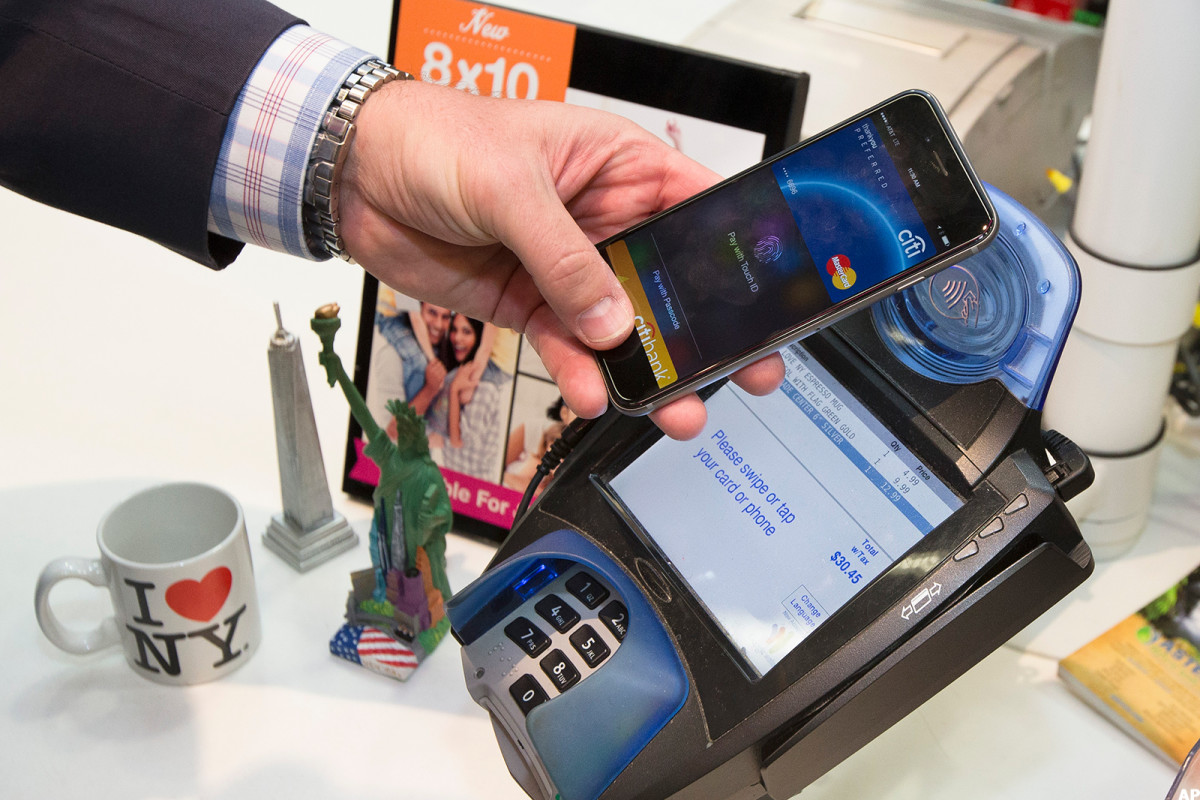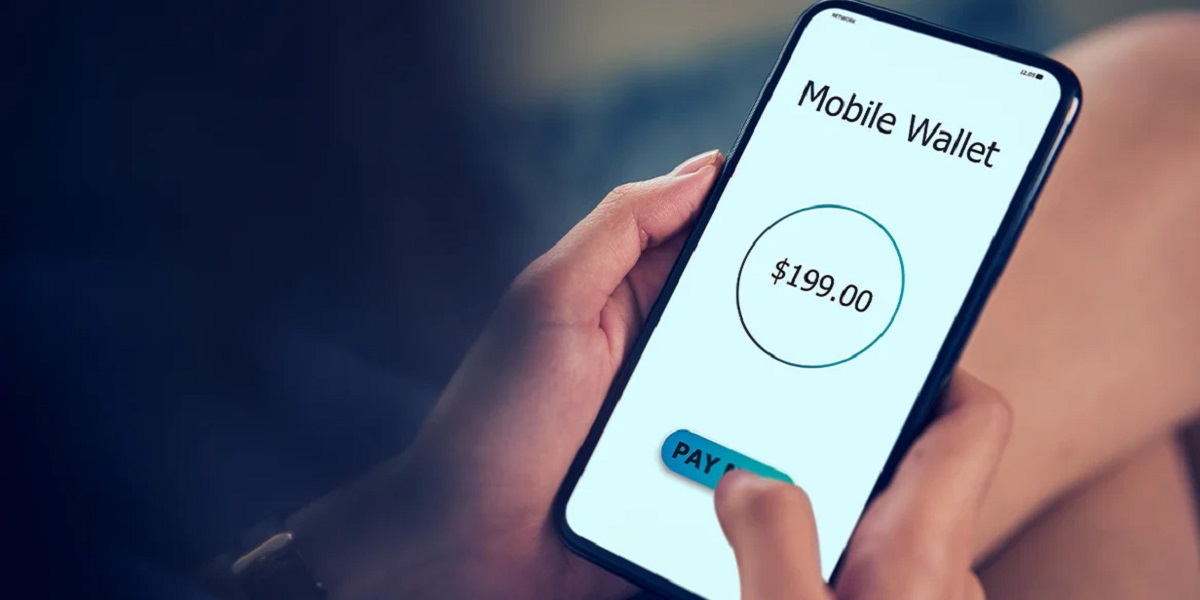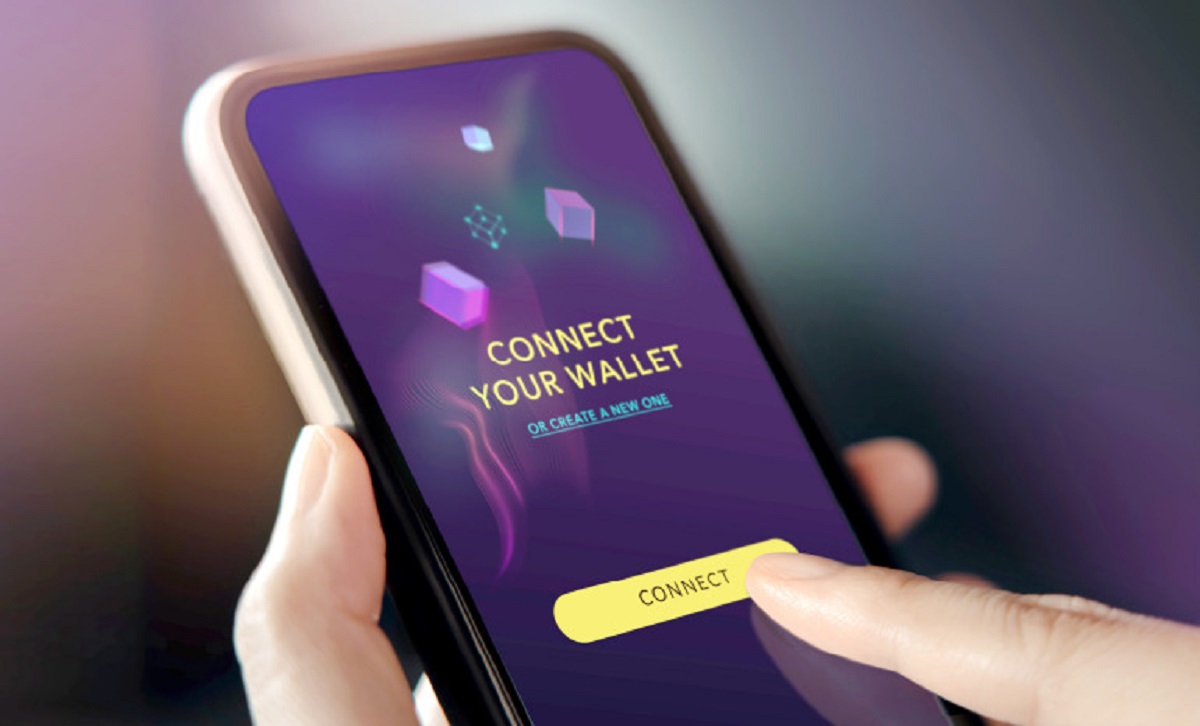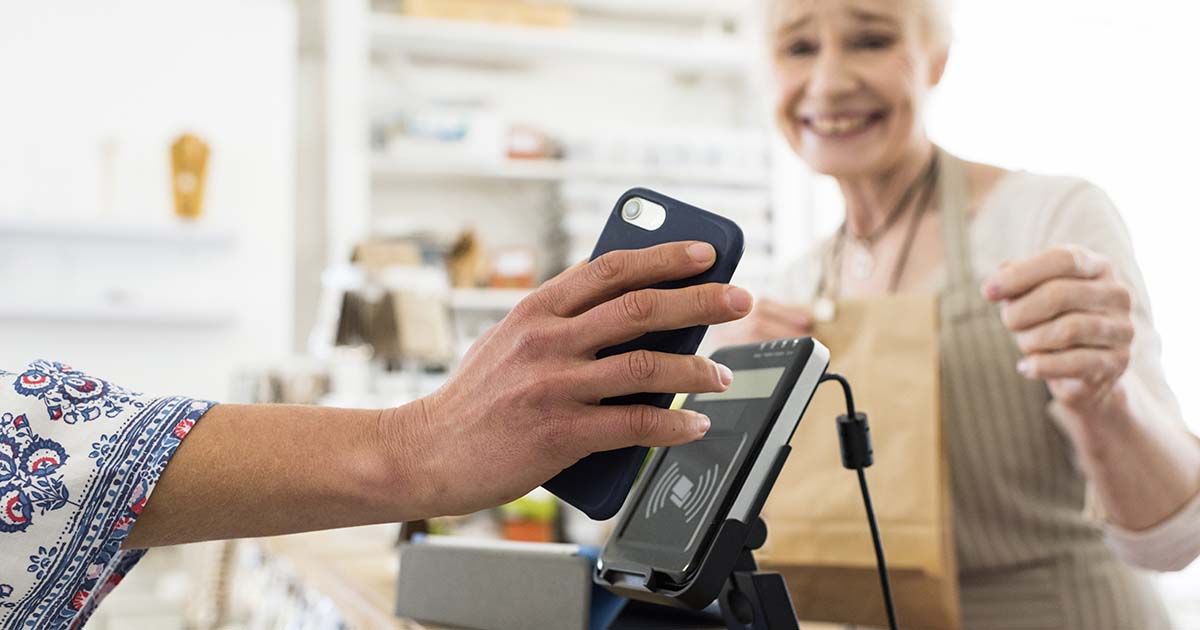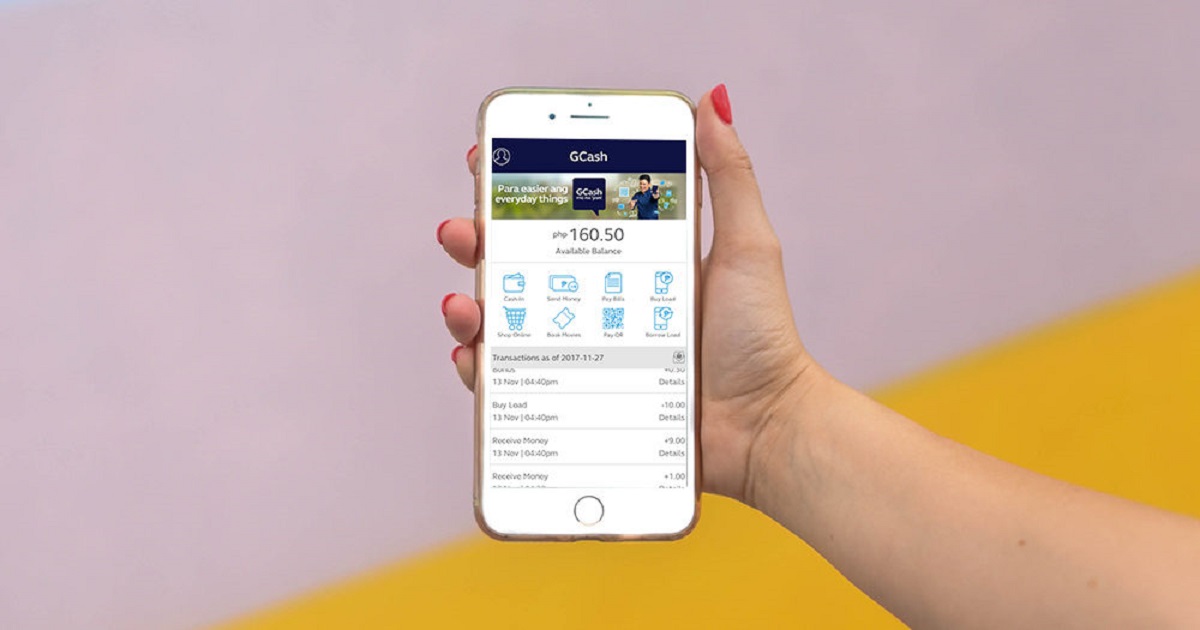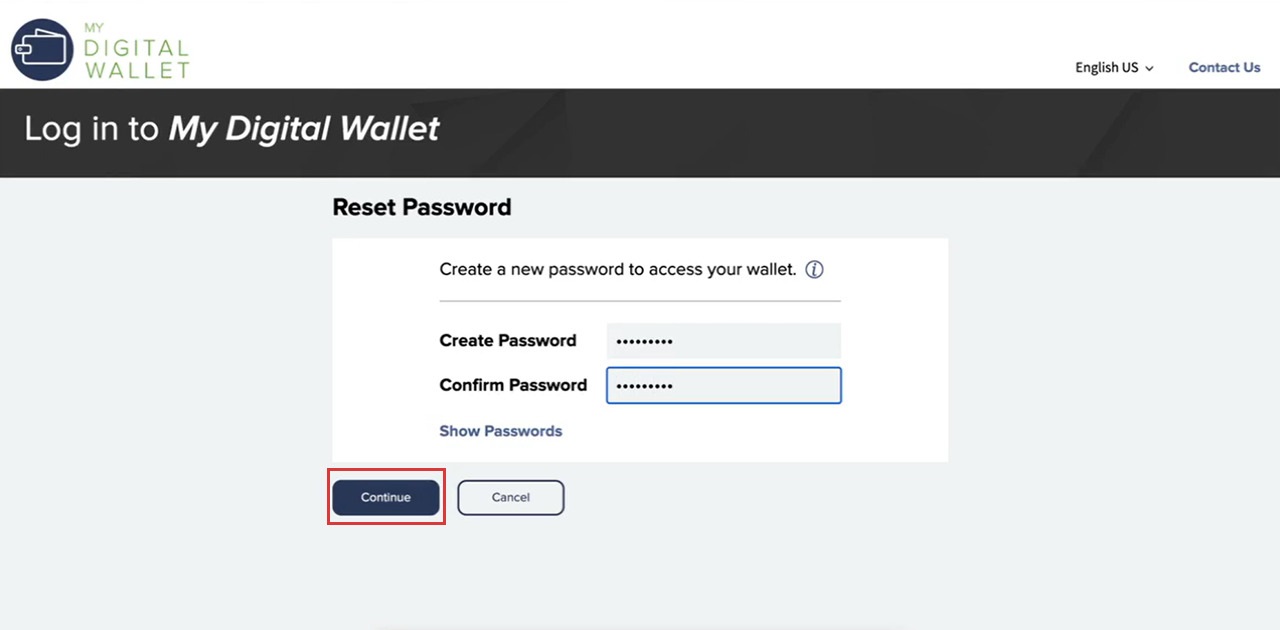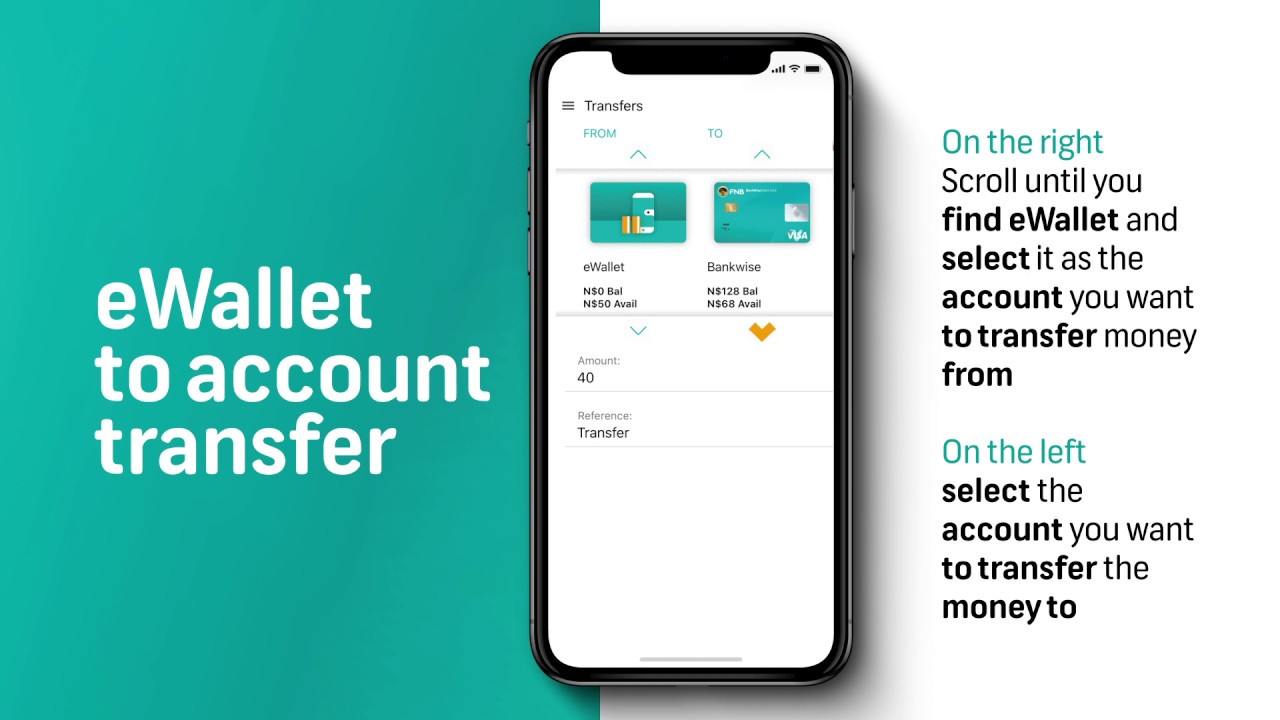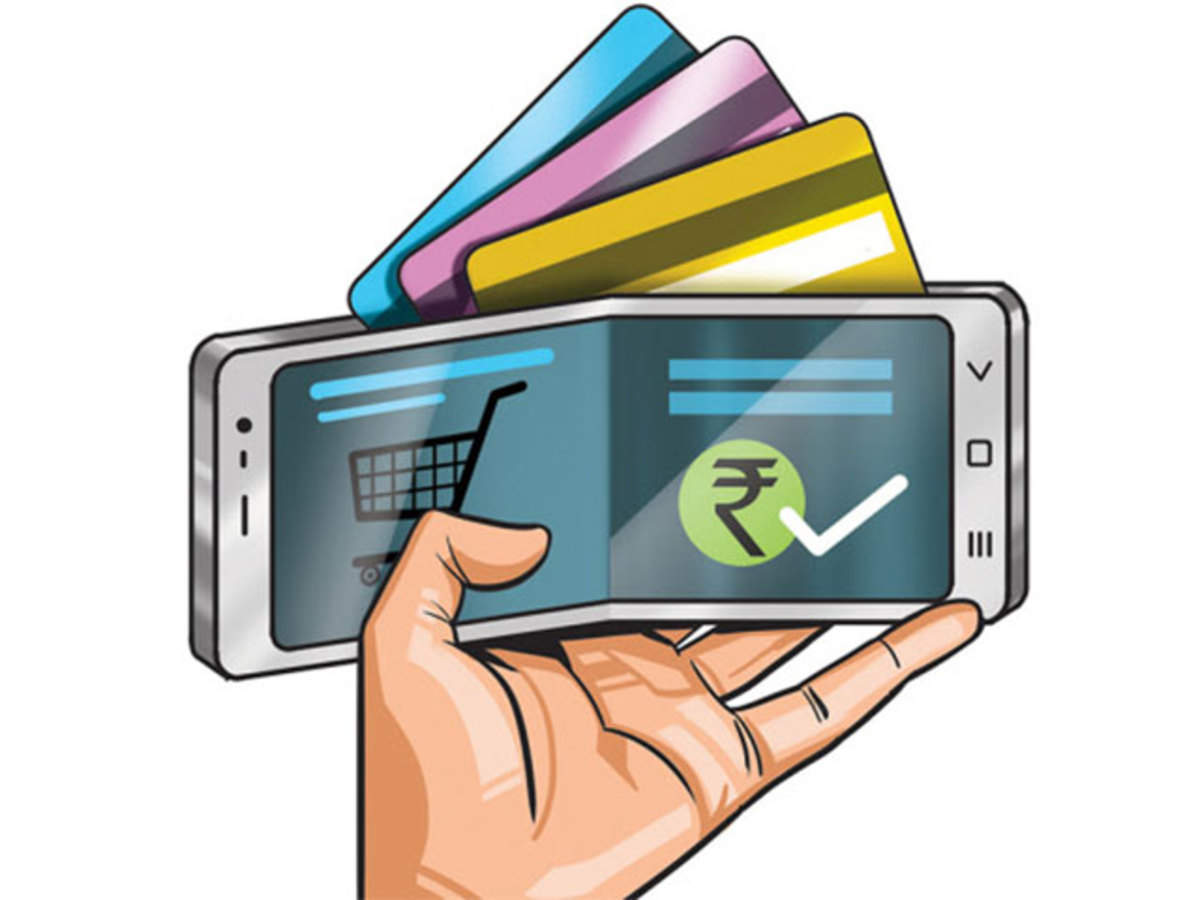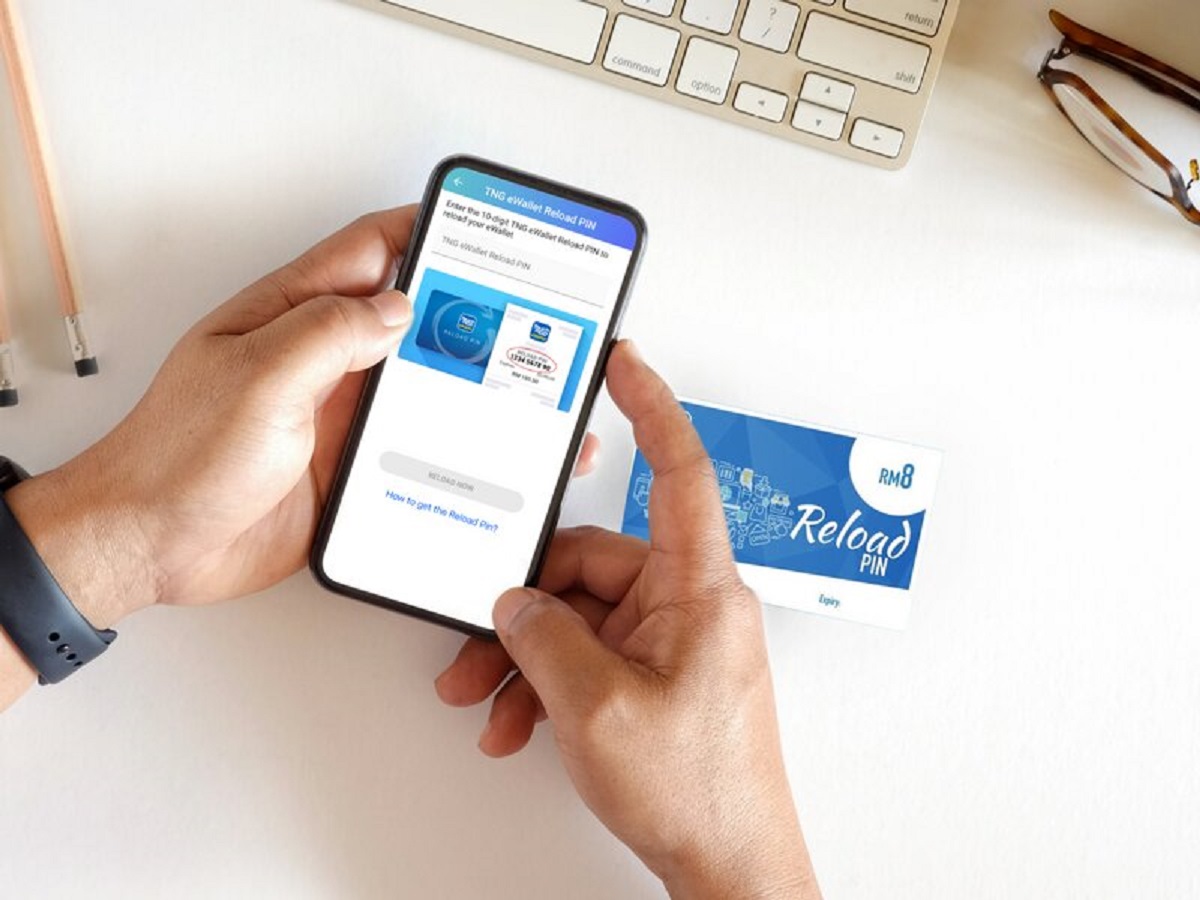What is an E-wallet?
An E-wallet, also known as a digital wallet or electronic wallet, is a digital payment method that allows individuals to store, manage, and make secure online transactions. It serves as a virtual version of a physical wallet, enabling users to conveniently make payments for goods and services through their mobile devices or computers.
E-wallets provide a safe and convenient alternative to traditional payment methods such as cash, credit cards, and bank transfers. With an E-wallet, users can securely store their payment information, including credit card details, bank account information, and loyalty card data, eliminating the need to carry physical cards or cash. They can make instant payments, track transaction history, and enjoy seamless shopping experiences across various online platforms.
Essentially, an E-wallet acts as a bridge between individuals and merchants, facilitating the exchange of money in a fast and secure manner. It encrypts and stores sensitive information securely, utilizing advanced security features such as tokenization and two-factor authentication to protect user data from unauthorized access.
Furthermore, E-wallets often come with additional features and benefits, such as the ability to split bills, send and receive money to friends and family, and manage gift cards and vouchers. Some E-wallet providers even offer loyalty programs, discounts, and cashback rewards, enhancing the overall user experience and incentivizing their usage.
Popular E-wallet providers include PayPal, Google Pay, Apple Pay, and Venmo, but there are numerous other options available in the market, each with its own unique features and capabilities.
In summary, an E-wallet is a digital payment method that allows individuals to securely store and manage their payment information. It offers convenience, security, and additional features, making it an attractive alternative to traditional payment methods in today’s digital age.
Setting up an E-wallet account
Setting up an E-wallet account is a straightforward process that usually involves a few simple steps. While the exact steps may vary depending on the E-wallet provider you choose, the general process outlined below will give you a good idea of what to expect:
- Choose an E-wallet provider: Start by researching and selecting a reputable E-wallet provider that suits your needs. Popular options include PayPal, Google Pay, and Apple Pay.
- Download the app or visit the website: Once you’ve chosen a provider, download the corresponding mobile app or visit their website to begin the account setup process.
- Create an account: Follow the prompts to create a new account. You may be required to provide some personal information, such as your name, email address, and phone number.
- Verify your identity: Depending on the provider, you may need to complete a verification process to ensure the security of your account. This could involve providing additional personal information or submitting identification documents.
- Link a funding source: To use your E-wallet for transactions, you’ll need to link it to a funding source. This can be a bank account, credit card, or debit card. Follow the instructions provided by the E-wallet provider to link your chosen funding source.
- Set up security measures: It’s crucial to prioritize the security of your E-wallet account. Set up strong passwords, enable two-factor authentication if available, and explore any additional security features provided by the E-wallet provider.
- Explore additional features: Once your account is set up, take the time to familiarize yourself with any additional features offered by the E-wallet provider. This could include setting spending limits, managing loyalty cards, or syncing your account with other services.
Remember, each E-wallet provider may have specific requirements and procedures, so be sure to read their documentation or reach out to customer support if you encounter any difficulties during the account setup process. With a few simple steps, you’ll soon have an E-wallet account ready to use for secure and convenient online transactions.
Adding money to your E-wallet account
Once you have set up your E-wallet account, the next step is to add funds to it. Adding money to your E-wallet account is typically a straightforward process and can be done in a few different ways, depending on the E-wallet provider:
- Bank transfer: One common method is to transfer funds from your bank account directly into your E-wallet account. To do this, you will first need to link your bank account to your E-wallet. Follow the instructions provided by the E-wallet provider to initiate the transfer. It may take a couple of business days for the funds to appear in your E-wallet account.
- Credit or debit card: Many E-wallet providers allow you to add money to your account using a credit or debit card. Simply input your card details and the amount you wish to add, and the funds will be available in your E-wallet account instantly. Be aware that some E-wallet providers may charge a small fee for card transactions.
- Partnered retailers: Certain E-wallet providers have partnered with retail stores or websites, allowing you to add money to your E-wallet account through these platforms. Check the E-wallet provider’s website or app for a list of partnered retailers and follow the instructions to complete the transaction.
- Over-the-counter (OTC) locations: Some E-wallet providers offer OTC services where you can visit designated physical locations to add cash to your E-wallet account. Look for approved OTC locations nearest to you on the provider’s website or app, and bring the required amount in cash to complete the transaction.
It’s important to note that each E-wallet provider may have different options available for adding funds, so ensure you understand the specific process and any associated fees before proceeding. Additionally, some E-wallets may have limits on the amount of money you can add or restrictions on certain types of transactions.
Regularly check your E-wallet account balance to ensure you have sufficient funds for your intended purchases or transactions. You can typically view your account balance within the E-wallet app or on the provider’s website.
By adding money to your E-wallet account, you can enjoy the convenience of having funds readily available for seamless and secure online transactions.
Making payments with an E-wallet
Making payments with an E-wallet is a convenient and secure way to complete transactions online or in-person. Once you have funds in your E-wallet account, you can use them for various types of payments, including:
1. Online purchases: When shopping online, look for the E-wallet payment option during checkout. Select your E-wallet provider from the available options and follow the prompts to authorize the payment. Depending on the E-wallet provider, you may need to input a PIN, use biometric authentication, or enter a one-time verification code for added security.
2. In-app purchases: Many mobile apps and services offer the option to pay using an E-wallet. This is especially common for digital services, subscription-based platforms, or in-game purchases. Simply select the E-wallet payment method and follow the provided instructions to complete the transaction within the app.
3. Contactless payments: E-wallets often support contactless payment methods, such as Near Field Communication (NFC) or Quick Response (QR) codes. To make a contactless payment in-store, ensure that the merchant accepts your E-wallet payment method. Simply hold your smartphone or device near the payment terminal or scan the merchant’s displayed QR code. Follow any additional prompts for authorization and confirmation of the payment.
4. Peer-to-peer transfers: E-wallets often allow users to send money directly to friends, family, or other contacts. This can be useful for splitting bills, repaying loans, or sending gifts. Within the E-wallet app or site, navigate to the money transfer feature and input the recipient’s information, such as their E-wallet username, mobile number, or email address. Confirm the amount and authorize the transfer to complete the payment.
It’s worth noting that some E-wallet providers may impose transaction limits or fees for certain types of payments. Familiarize yourself with your chosen E-wallet’s terms and conditions to ensure you understand any potential limitations or charges.
When making payments with an E-wallet, you can enjoy the added benefits of fast and secure transactions. Your payment information is encrypted and protected, reducing the risk of fraud or unauthorized access. Additionally, E-wallets often offer features like transaction history tracking, purchase notifications, and loyalty program integration to enhance your payment experience.
Whether you’re shopping online, making in-app purchases, or using contactless payments in-store, an E-wallet provides a convenient and secure way to complete transactions with ease.
Transferring money to another E-wallet
Transferring money to another E-wallet is a straightforward process that allows you to send funds securely and conveniently to friends, family, or business partners. Whether you need to repay a debt, split expenses, or make a gift, most E-wallet providers offer a simple method to transfer money to another E-wallet account. Here’s how:
- Launch the E-wallet app or access the website: Open the E-wallet app on your mobile device or navigate to the E-wallet provider’s website on your computer.
- Open the transfer money feature: Look for the option to “Send Money,” “Transfer Funds,” or a similar function within the E-wallet app or site. Click or tap on it to proceed.
- Enter the recipient’s details: Provide the necessary information to identify the recipient’s E-wallet account. This typically includes their E-wallet username, mobile number, or email address. Make sure to double-check the details to ensure the transfer goes to the correct recipient.
- Specify the amount: Input the amount of money you wish to transfer to the recipient’s E-wallet account. Some E-wallet providers may also allow you to choose the currency if multiple options are available.
- Review and confirm: Take a moment to review the details of the transfer, including the recipient’s information and the amount. Confirm that everything is correct before proceeding.
- Authorize the transfer: Depending on the E-wallet provider, you may need to provide additional authentication, such as a PIN, fingerprint scan, or passcode. This step ensures the security of the transfer and confirms your consent.
- Confirmation and notification: Once the transfer is complete, you will typically receive a confirmation message or email. Additionally, the recipient will be notified of the incoming funds in their E-wallet account.
The time it takes for the money to appear in the recipient’s E-wallet account can vary depending on the E-wallet provider, but it is generally processed quickly, often within minutes. Some E-wallet providers may charge a minimal fee for transferring funds to another E-wallet, so be sure to check the provider’s fee schedule if applicable.
Transferring money to another E-wallet offers a convenient way to send funds to others, eliminating the need for cash or traditional bank transfers. It is a secure and efficient method for completing peer-to-peer transactions within the E-wallet ecosystem.
Managing your E-wallet account
Managing your E-wallet account is essential to ensure smooth transactions, track your finances, and stay on top of your digital payments. Most E-wallet providers offer a range of features and tools to help you conveniently manage your account. Here are some common management tasks and features to consider:
- Viewing transaction history: E-wallet providers typically provide a transaction history feature that allows you to review your past payments, transfers, and purchases. This enables you to keep track of your spending and easily reconcile your records.
- Checking your account balance: It’s important to regularly monitor your E-wallet account balance to ensure you have sufficient funds for your intended transactions. Most E-wallet apps or websites display your current balance prominently, making it easy to check at a glance.
- Setting notifications: Many E-wallet providers give you the option to set up custom notifications for account activity. You can receive alerts for incoming funds, successful payments, or low balance warnings. These notifications help keep you informed about the status of your account.
- Managing linked payment methods: If you have linked credit cards, debit cards, or bank accounts to your E-wallet, make sure to review and manage these payment methods regularly. You can add or remove linked accounts, update card details, or change default payment methods as needed.
- Adjusting spending limits: Some E-wallet providers allow you to set spending limits or configure budgeting features to help you manage your expenses. These tools can help you stay within your budget and ensure responsible use of your E-wallet funds.
- Updating personal information: If there are any changes to your personal details, such as your email address, phone number, or mailing address, take the time to update this information in your E-wallet account. Keeping your account details accurate ensures smooth communication and account security.
- Reviewing security settings: E-wallets prioritize security and often offer various security features. Take advantage of available security settings, such as enabling two-factor authentication, setting strong passwords, and regularly reviewing your security settings to protect your account.
Additionally, some E-wallet providers offer additional features such as budgeting tools, expense categorization, integration with loyalty programs, and the ability to save gift cards or reward points within your account. Explore your E-wallet’s documentation or settings to discover these added benefits.
Managing your E-wallet account regularly allows you to stay organized, monitor your finances, and ensure the security of your transactions. By staying on top of these management tasks, you can make the most of your E-wallet experience.
Security measures for using an E-wallet
Using an E-wallet offers convenience and flexibility when it comes to managing your digital payments. However, it’s crucial to prioritize the security of your E-wallet account to protect your personal and financial information. Here are some essential security measures to consider:
- Strong passwords: Create a strong, unique password for your E-wallet account. Avoid using easily guessable passwords and consider using a mix of uppercase and lowercase letters, numbers, and special characters. Regularly update your password and avoid sharing it with others.
- Two-factor authentication (2FA): Enable two-factor authentication if your E-wallet provider offers this feature. 2FA adds an extra layer of security by requiring a second form of verification, such as a unique code sent to your mobile device, in addition to your password.
- Biometric authentication: Take advantage of biometric authentication options, such as fingerprint or facial recognition, if supported by your E-wallet app or device. Biometrics can provide an additional level of security by ensuring only authorized users can access your account.
- Regularly update your app: Keep your E-wallet app and any associated mobile device software up to date. App updates often contain security patches and improvements to protect against vulnerabilities and emerging threats.
- Be cautious with app permissions: When installing and using an E-wallet app, carefully review the permissions requested. Only grant necessary permissions and be cautious of apps that ask for excessive access to your device’s features or personal information.
- Secure network connections: Avoid using public Wi-Fi networks or unsecured networks for E-wallet transactions. Public networks may pose security risks, as data transmitted over these networks can be intercepted. Instead, use trusted Wi-Fi networks or your mobile data connection.
- Monitor your transactions: Regularly review your transaction history and account balance to identify any unauthorized activities. Report any suspicious transactions to your E-wallet provider immediately.
- Phishing awareness: Be wary of phishing attempts where attackers try to trick you into revealing your E-wallet login credentials or other sensitive information. Avoid clicking on suspicious links or providing personal information through email or text messages.
- Keep personal information private: Do not share your E-wallet account details, such as usernames, passwords, or verification codes, with anyone. Avoid storing sensitive information, such as account credentials or identification documents, on your device or in unencrypted storage.
- Keep your device secure: Set a strong passcode or PIN for your device to prevent unauthorized access. Regularly update your device software to ensure you have the latest security features and patches.
By following these security measures, you can significantly reduce the risk of unauthorized access to your E-wallet account and protect your financial information. Stay vigilant and keep yourself informed of the latest security practices to ensure a safe and secure E-wallet experience.
Benefits of using an E-wallet
Using an E-wallet offers a range of benefits that can enhance your financial management and simplify your transactions. Here are some key advantages of using an E-wallet:
- Convenience: One of the primary benefits of an E-wallet is convenience. With an E-wallet, you can make payments quickly and easily, whether you’re shopping online, in-app, or in-person. You don’t need to carry physical cash or cards, as all your payment information is stored securely in your E-wallet account.
- Security: E-wallets prioritize the security of your transactions. Your payment information is encrypted and protected, reducing the risk of fraud or identity theft. Additionally, features such as two-factor authentication and biometric authentication add extra layers of security to ensure only authorized individuals can access your E-wallet account.
- Multiple payment options: E-wallets often allow you to link different payment methods, such as credit cards, debit cards, or bank accounts. This flexibility allows you to choose your preferred payment option for different transactions, providing convenience and personal preference.
- Transaction history and tracking: E-wallets provide detailed transaction history, allowing you to track your purchases, transfers, and payments easily. This feature helps you keep a record of your expenses, simplifies financial tracking, and aids in budgeting.
- Splitting bills and peer-to-peer transfers: Many E-wallets offer convenient features for splitting bills and transferring funds to friends, family, or colleagues. Whether you’re organizing a group dinner or repaying a debt, E-wallets make it easy to divide expenses and send money directly from your account to another user’s E-wallet.
- Rewards and loyalty programs: Some E-wallet providers offer rewards and loyalty programs, allowing you to earn discounts, cashback, or points when using their platform for transactions. Taking advantage of these programs can help you save money and benefit from exclusive offers.
- Flexibility and versatility: E-wallets can be used for various purposes beyond payments. Some E-wallets offer features like gift card management, ticket purchases, or integration with other services, increasing their versatility and making them an all-in-one financial tool.
- Global accessibility: E-wallets provide the convenience of making payments globally. Many E-wallet providers support international transactions, enabling you to make purchases or send money to recipients in different countries without the need for traditional currency conversion or bank transfers.
- Reduced reliance on physical documents: With an E-wallet, you can store and access digital receipts, loyalty cards, and other important documents directly within the app. This eliminates the need to keep track of physical copies and allows for easy retrieval when needed.
- Environmental sustainability: By using an E-wallet, you can contribute to sustainability efforts by reducing the need for physical paper receipts, reducing carbon emissions associated with manufacturing physical cards, and minimizing paper waste in general.
In summary, E-wallets offer convenience, security, and flexibility for managing your financial transactions. With multiple payment options, transaction tracking, rewards programs, and global accessibility, E-wallets have become an integral part of the modern digital economy.
Comparisons between different E-wallet platforms
There are several E-wallet platforms available in the market, each offering unique features and capabilities. Here, we compare some popular E-wallet platforms to help you make an informed decision based on your needs and preferences:
PayPal
- Accepted by a wide range of merchants and online platforms.
- Offers a user-friendly interface and easy account setup process.
- Allows both personal and business accounts.
- Offers buyer and seller protection policies.
- Facilitates international transactions with multiple currencies supported.
Google Pay
- Seamless integration with Android devices and Google services.
- Allows contactless payments using NFC technology.
- Offers rewards and cashback programs.
- Allows easy splitting of bills and sending money to contacts.
- Provides a user-friendly and intuitive interface.
Apple Pay
- Integrated with Apple devices, offering convenient and secure transactions using Touch ID or Face ID.
- Supports contactless payments through NFC technology.
- Offers loyalty card integration and rewards programs.
- Works seamlessly with Apple Wallet, allowing easy access to tickets, boarding passes, and more.
- Facilitates person-to-person payments through iMessage.
Samsung Pay
- Compatible with Samsung devices, including both older models and newer Galaxy smartphones.
- Offers the ability to make payments using both NFC and Magnetic Secure Transmission (MST) technology, allowing compatibility with a wider range of payment terminals.
- Provides added security through iris scanning and fingerprint recognition.
- Offers reward points and cashback programs.
- Supports gift card integration for easy management.
It’s important to note that these are just a few examples of popular E-wallet platforms, and there are numerous other options available in the market, each with its own unique features and strengths. When comparing E-wallet platforms, consider factors such as acceptance at your preferred merchants, compatibility with your device, ease of use, security features, and any specific benefits or rewards programs.
Take the time to research and explore the features and terms of each E-wallet platform to determine which one aligns best with your needs, preferences, and lifestyle. Consider reading user reviews and seeking recommendations from trusted sources to gather more insights.
Ultimately, the best E-wallet platform will depend on your personal requirements and the features that are most important to you.
Common issues and troubleshooting tips for E-wallets
While E-wallets provide a convenient and secure way to manage your digital transactions, you may encounter certain issues from time to time. Here are some common issues that users may face with E-wallets, along with helpful troubleshooting tips:
Transaction failures:
- If a transaction fails, ensure that you have sufficient funds in your E-wallet account or that your linked payment method is active.
- Check your internet connection and ensure that you have a stable network connection before attempting the transaction again.
- If the issue persists, contact customer support for your E-wallet provider to investigate the cause of the transaction failure.
Incorrect or unauthorized charges:
- If you notice unauthorized charges in your E-wallet account, report the issue to your E-wallet provider immediately. They will investigate the matter and take appropriate action to resolve the situation.
- Regularly review your transaction history to identify any unexpected or suspicious charges. If you identify any inaccuracies, contact customer support to report the issue and seek assistance.
- Double-check the details before making a payment to ensure that you have selected the correct recipient and entered the accurate amount. Double-tap or double-clicking on payment buttons may accidentally initiate a payment.
Account access issues:
- If you are unable to access your E-wallet account, ensure that you have entered the correct login credentials, including username and password.
- If you have forgotten your password, utilize the “Forgot Password” or “Reset Password” option provided by your E-wallet provider to regain access to your account.
- Ensure that your E-wallet app is up to date and running on a compatible device with a stable internet connection.
- If the issue persists, reach out to customer support for your E-wallet provider for further assistance and guidance.
Compatibility issues:
- Ensure that your device meets the minimum system requirements specified by the E-wallet provider.
- Check for updates to your device’s operating system as well as the E-wallet app to ensure compatibility.
- If you encounter compatibility issues with a specific service or merchant, reach out to the merchant’s customer support or contact your E-wallet provider for assistance.
Customer support and assistance:
- If you encounter any issues with your E-wallet, first consult the E-wallet provider’s documentation or help center for troubleshooting guides and solutions.
- Utilize the customer support channels provided by your E-wallet provider, such as online chat, email, or phone support, to seek assistance and resolve any issues you may face.
- When contacting customer support, be prepared to provide relevant information, such as your account details, transaction information, and any error messages received, to expedite the troubleshooting process.
Remember, if you encounter any issues with your E-wallet, it’s important to reach out to your E-wallet provider’s customer support for assistance. They are equipped to help resolve any problems, answer your inquiries, and ensure a smooth experience with your E-wallet.







